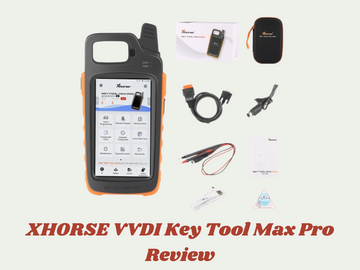
Car locks have evolved significantly over the decades, from simple mechanical devices to sophisticated electronic systems. Understanding the different types of car locks is essential for vehicle owners, especially when dealing with lockouts, replacements, or security upgrades. If you’re aiming to boost your vehicle’s security or troubleshoot issues with your current lock, understanding traditional keys, transponders, keyless entry systems, and advanced biometric options can save you time and money.
In this comprehensive guide, we'll explore the various types of car locks available today, their security features, and what makes each unique.
|
Lock Type |
Security Level |
Common Years |
Key Features |
|
Traditional Key Locks |
Low-Medium |
Pre-2000s |
Physical key insertion, mechanical operation |
|
Transponder Keys |
Medium-High |
1995-Present |
Contains microchip that communicates with vehicle |
|
Keyless Entry Remotes |
Medium |
1990s-Present |
Remote button operation, separate from ignition key |
|
Smart Key/Keyless Go |
High |
2000s-Present |
Proximity-based operation, no physical key insertion |
|
Digital Key Systems |
High |
2010s-Present |
Smartphone-based operation via dedicated apps |
|
Biometric Systems |
Very High |
2010s-Present |
Fingerprint or facial recognition technology |
Traditional Key Locks
Traditional car locks were the standard for vehicle security until the 1990s. These purely mechanical systems use a pin tumbler mechanism where the correct key aligns pins inside the cylinder, allowing it to turn and activate the locking mechanism.
Key Features:
-
Door lock cylinders that secure vehicle entry points
-
Ignition cylinders for starting the vehicle
-
Trunk locks for securing cargo areas
-
Glove compartment locks for valuables protection
Despite their longevity, traditional key locks have several limitations:
-
Key wear causing difficult operation over time
-
Lock jamming from debris or damage
-
Vulnerability to picking techniques
-
Susceptibility to freezing in cold weather
Maintenance Tip: Regular application of graphite-based lubricants can extend the lifespan of mechanical locks and prevent jamming.
Transponder Key Systems
Introduced widely in the mid-1990s, transponder keys revolutionized vehicle security by adding an electronic layer of protection. These keys contain a microchip that communicates with the vehicle's immobilizer system.
How Transponder Technology Works: The transponder key creates a digital "handshake" with your vehicle:
-
Vehicle sends a radio signal to the key when inserted
-
Key's microchip responds with a unique code
-
Vehicle computer verifies the code
-
Engine starts only if the correct code is received
Security Benefits:
-
Virtually impossible to hot-wire vehicles equipped with this technology
-
Each transponder contains a unique code from millions of possible combinations
-
Many systems implement "rolling codes" that change with each use
-
Dramatic reduction in vehicle theft rates following widespread adoption
Replacement Considerations:
-
Keys must be programmed specifically to your vehicle's computer system
-
Programming typically requires dealer-level equipment
-
Replacement costs range from $50-$400 depending on vehicle
-
Some systems require all existing keys to be present during programming
Keyless Entry Remote Systems
Keyless entry remotes transformed how we interact with our vehicles, allowing wireless communication with the car's central locking system using radio frequency signals.
Standard remote fob functions include:
-
Door locking/unlocking at a distance
-
Trunk or hatch release
-
Panic alarm activation
-
Remote start (on some models)
-
Headlight activation or "car finder" function
Practical Considerations: Most key fobs use small lithium batteries lasting 1-3 years. Signs of battery depletion include decreased operating range and inconsistent operation. Programming requirements vary by manufacturer, with some allowing self-programming while others require dealer assistance.
These systems typically integrate with vehicle alarm systems, with remote lock activation arming the factory security system and providing an additional layer of protection.
Smart Key and Keyless Go Systems
Smart key systems represent a significant advance in convenience and security. Using low-frequency radio signals, these systems continuously communicate between the key and vehicle without requiring any user action.
Key Features:
-
Automatic detection when the key approaches the vehicle (typically within 3-6 feet)
-
Capacitive touch sensors on door handles that trigger unlocking when touched
-
Push-button start eliminates the need for key insertion
-
Personalization features that adjust vehicle settings based on which smart key is detected
Security Considerations: While offering advanced protection with rolling encryption codes and engine immobilizer technology, these systems face unique vulnerabilities:
-
"Relay attacks" where thieves amplify the key's signal from inside a home
-
Signal jamming that prevents proper locking when walking away
-
Higher replacement costs ($200-$500) compared to traditional keys
Pro Tip: Store smart keys in signal-blocking pouches when not in use to prevent relay attacks.
Digital Key Systems
Digital key systems represent the cutting edge of car lock technology, turning your smartphone into your car key. These systems operate through dedicated manufacturer apps and secure wireless technologies.
How Digital Keys Work:
-
Near Field Communication (NFC) or Bluetooth Low Energy (BLE) connectivity
-
Secure encrypted communication channels
-
Additional security through the phone's biometric authentication
-
Cloud-based management for access control
Benefits of Digital Key Systems:
-
Remote access sharing with family or service personnel
-
Time-limited access windows for temporary users
-
Usage restrictions for teen drivers
-
Detailed activity logs showing vehicle access history
-
Immediate revocation of shared access when needed
Manufacturers have implemented various backup systems to address potential failure points, including physical backup keys, PIN code entry systems, and emergency assistance services.
Biometric Vehicle Access Systems
Biometric access represents the newest frontier in vehicle security, using unique physical characteristics rather than physical keys or electronic tokens.
Technologies in Use:
-
Fingerprint sensors embedded in door handles or dashboard surfaces
-
Facial recognition cameras integrated into vehicle structures
-
Voice recognition systems as supplementary verification
-
Multi-factor authentication combining biometrics with traditional methods
Current Implementations:
-
Hyundai introduced fingerprint access in select markets with the 2019 Santa Fe
-
Tesla vehicles utilize the owner's smartphone biometrics for authentication
-
Mercedes-Benz is developing advanced facial recognition systems
-
Aftermarket options now offer fingerprint authentication for existing vehicles
Security Advantages:
-
Cannot be lost or forgotten like physical keys
-
Extremely difficult to duplicate or forge
-
Provides automatic personalization to individual users
-
Creates detailed access logs with identification
Challenges:
-
Accuracy issues in extreme environmental conditions
-
Privacy concerns regarding biometric data storage
-
Need for robust backup systems
Car Lock Security: Comparing Different Systems
When evaluating car lock types for your vehicle, consider their resistance to both physical and electronic attacks:
Physical Attack Resistance:
-
Traditional locks: Low-Medium
-
Transponder systems: Medium
-
Keyless entry: Medium
-
Smart keys: Medium-High
-
Digital systems: Medium-High
-
Biometric systems: High
Electronic Attack Resistance:
-
Traditional locks: High (no electronic components)
-
Transponder systems: Medium-High
-
Keyless entry: Medium
-
Smart keys: Medium (vulnerable to relay attacks)
-
Digital systems: Varies by implementation
-
Biometric systems: High (with proper implementation)
Practical Security Enhancements:
-
Use signal-blocking pouches for smart keys
-
Consider steering wheel locks as visible deterrents
-
Install GPS tracking systems for recovery if theft occurs
-
Park in well-lit, high-traffic areas whenever possible
-
Keep vehicle software and security systems updated
Lost your key? Auto Key Technology offers a complete range of replacement key fobs, transponders, flip keys, and professional programming tools. Contact us to solve your car lock problems.
Summing Up
Car locks have evolved from simple mechanical devices to sophisticated electronic and biometric systems, balancing security with convenience. When choosing the right approach for your vehicle, consider your specific needs, usage patterns, and security concerns. A multi-layered approach combining physical and electronic deterrents often provides the most comprehensive protection.
As automotive technology advances, we can expect further integration between vehicle access systems and broader digital ecosystems. Whether you drive a classic car with traditional locks or the latest model with biometric access, understanding the different types of car locks helps you protect your valuable investment.




